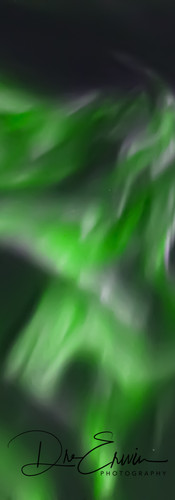A Guide to Witnessing the Aurora Borealis in Canada
- Dre Erwin

- Apr 21, 2023
- 2 min read
Updated: Apr 22, 2023
Canada is a must-visit destination for those seeking to witness the mesmerizing northern lights, also known as the aurora borealis. As one of the northernmost countries in the world, certain regions in Canada experience this natural phenomenon up to 240 times annually.
The aurora borealis occurs when solar particles collide with the Earth's magnetic field, causing a luminous display in the Northern Hemisphere. The Southern Hemisphere's version of this phenomenon is known as the aurora australis.

Although the auroral zone, which stretches from the Arctic Circle (at 66°33′ north) to the North Pole, is the best location for viewing the northern lights, accessing this remote area is challenging due to its sparse settlements. As a result, most northern lights tourism in Canada takes place in relatively more accessible areas such as Yellowknife in Northwest Territories, Whitehorse in Yukon, and Churchill in Manitoba, which is a popular destination for polar bear and beluga whale watching. However, it's worth noting that northern Saskatchewan is also an excellent and less-known location for observing the northern lights. Therefore, it's recommended to place heavy emphasis on this region as well when planning your northern lights experience. For the best chance of seeing the northern lights, choose a destination located as far north and away from city lights as possible, with clear skies.

Solar activity tends to be at its peak around the fall equinox in September and the spring equinox in March. However, the longer daylight hours during these months can decrease your chances of witnessing the northern lights. Typically, the auroral activity reaches its climax between 10 p.m. and 2 a.m., but the northern lights can be visible at other times as long as the sky is dark.

To enhance your northern lights viewing experience, it's important to plan for as many days in Canada as possible since weather conditions may not permit sightings for a few days. Additionally, it's important to consider the moon's phase since the light from a full moon can dim the northern lights. Optimal conditions for viewing are during a new moon or crescent phases. Lastly, you can check the aurora forecasts from the Space Weather Prediction Center of the National Oceanographic and Atmospheric Administration, which provide northern lights predictions ranging from a few hours to a few days in advance based on solar activity.
To increase your chances of witnessing the northern lights, plan a trip to Canada's Great White North. This guide provides all the necessary tips for experiencing the awe-inspiring aurora borealis in Canada.

Although the northern lights can be active throughout the year, they may not always be visible. To increase your chances of viewing this celestial spectacle in Canada, plan your trip between September and March, when there's sufficient darkness during nighttime. In summer, Canada's northernmost regions experience 24 hours of daylight, making it difficult to see the northern lights.

























Absolutely gorgeous 💚💚💚💚